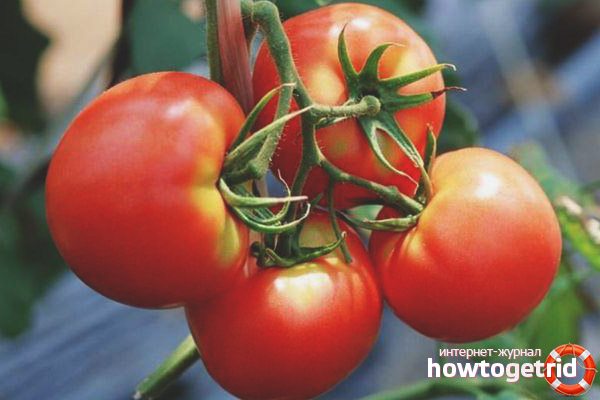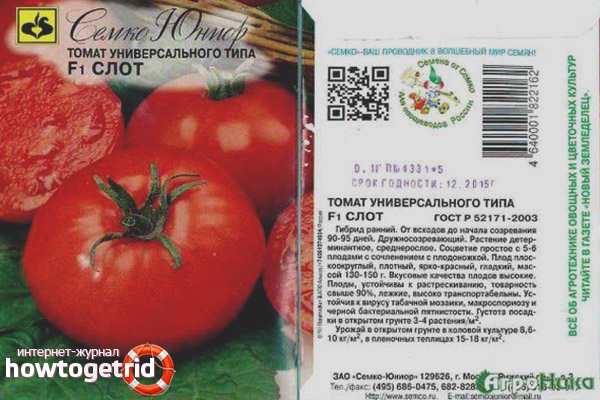The content of the article
This is a hybrid with an unusual name and high commodity characteristics. Lovers of small-fruited, medium-sized tomatoes will appreciate the work of breeders. Perfect for inexperienced, beginner summer residents. And it will be a valuable find for those who have not yet built their own greenhouse.
Characteristics and features of the hybrid
The tomato was bred by Russian breeders in 1999. It is a hybrid of the first generation (F1). This is a determinant (stunted) hybrid of a medium-late-ripening tomato. From the transplanting of seedlings into the ground until the fruiting begins 115-120 days pass.
The plant is powerful, standard type. The height of the shoots in the season is from 100 to 160cm, depending on the agricultural technique used and growing conditions. Fruits are pot-bellied, fleshy, roundish, strongly flattened at the poles of the form. The surface is smooth, with barely pronounced ribs. The skin is thin, but strong, resilient, resistant to cracking. Inside the tomato consists of 2-3 chambers with thick partitions between them.
Designed for growing both in open and protected ground (tunnels, film, glass or polycarbonate greenhouses). Suitable for cultivation even in large containers on the balcony or loggia. It has high yields. From one plant, productivity is 5-7 kg. Recommended planting scheme 4 plants per 1 sq.m. In this case, up to 28 kg of fruits can be obtained from one square meter of the bed.
Suitable for cultivation in open ground in the southern regions of the country - Crimea, Krasnodar Territory or Astrakhan region. In other regions, due to the average late ripening period, the tomato may not have time to ripen. Therefore, in these areas, indoor cultivation is recommended.
Additional Hybrid Benefits
- Fruits perfectly tolerate transportation over long distances.
- They have high rates of durability, resistant to decay during storage.
- It is great for fresh consumption as well as for preparing salads, heat treatment and preservation in general.
- Suitable for commercial cultivation with subsequent sale in the markets of fresh vegetables.
- Resistance to sudden changes in temperature - temperature swings and negative weather conditions in general.
- Very high heat and drought tolerance.
- High stable yield.
- The ability to bear fruit abundantly in both protected and open ground.
Terms and conditions for successful hybrid cultivation

Mandatory garter or installation of supports for ease of cultivation. And also to prevent fragments of fruiting branches under the weight of the fruit. To achieve high yields, it is recommended that the bush be formed into 2 stems.
This hybrid, especially in the early stages of development, responds very positively to fertilizer application. Therefore, it is necessary to regularly provide the plant with all the necessary macro- and microelements, the introduction of organic matter into the soil. In particular, well rotted manure. Moreover, it is advisable to carry out top dressing, both on the sheet and under the root.
It can be affected by brown spotting in the south and powdery mildew in the Middle lane.As well as some pests such as the Colorado potato beetle and tick. Therefore, at least 2 treatments per season are simply necessary - from diseases and pests. When loading fruits and directly bearing fruit, it is effective and safe to use biological products. After them, it is possible to eat tomatoes in a couple of days.
Care:
- Planting in March of healthy, seasoned and strong seedlings.
- Regular weeding and loosening of soil in the root zone of tomatoes.
- Regular ventilation of the greenhouse when growing in protected ground.
Reviews of summer residents of the hybrid
Video: how to water tomatoes properly










Submit